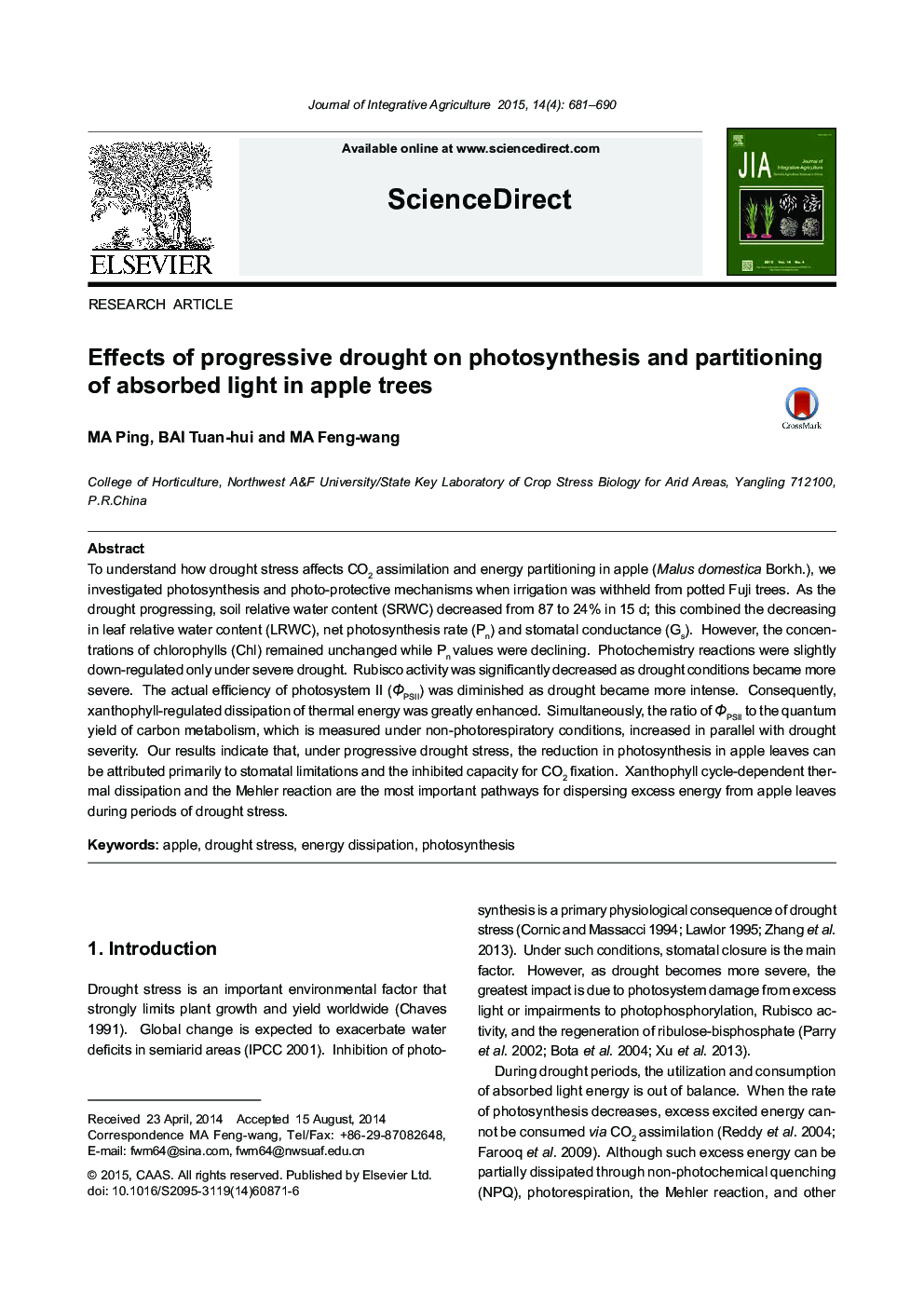| Article ID | Journal | Published Year | Pages | File Type |
|---|---|---|---|---|
| 4494358 | Journal of Integrative Agriculture | 2015 | 10 Pages |
To understand how drought stress affects CO2 assimilation and energy partitioning in apple (Malus domestica Borkh.), we investigated photosynthesis and photo-protective mechanisms when irrigation was withheld from potted Fuji trees. As the drought progressing, soil relative water content (SRWC) decreased from 87 to 24% in 15 d; this combined the decreasing in leaf relative water content (LRWC), net photosynthesis rate (Pn) and stomatal conductance (Gs). However, the concentrations of chlorophylls (Chl) remained unchanged while Pn values were declining. Photochemistry reactions were slightly down-regulated only under severe drought. Rubisco activity was significantly decreased as drought conditions became more severe. The actual efficiency of photosystem II (ϕPSII) was diminished as drought became more intense. Consequently, xanthophyll-regulated dissipation of thermal energy was greatly enhanced. Simultaneously, the ratio of ϕPSII to the quantum yield of carbon metabolism, which is measured under non-photorespiratory conditions, increased in parallel with drought severity. Our results indicate that, under progressive drought stress, the reduction in photosynthesis in apple leaves can be attributed primarily to stomatal limitations and the inhibited capacity for CO2 fixation. Xanthophyll cycle-dependent thermal dissipation and the Mehler reaction are the most important pathways for dispersing excess energy from apple leaves during periods of drought stress.
